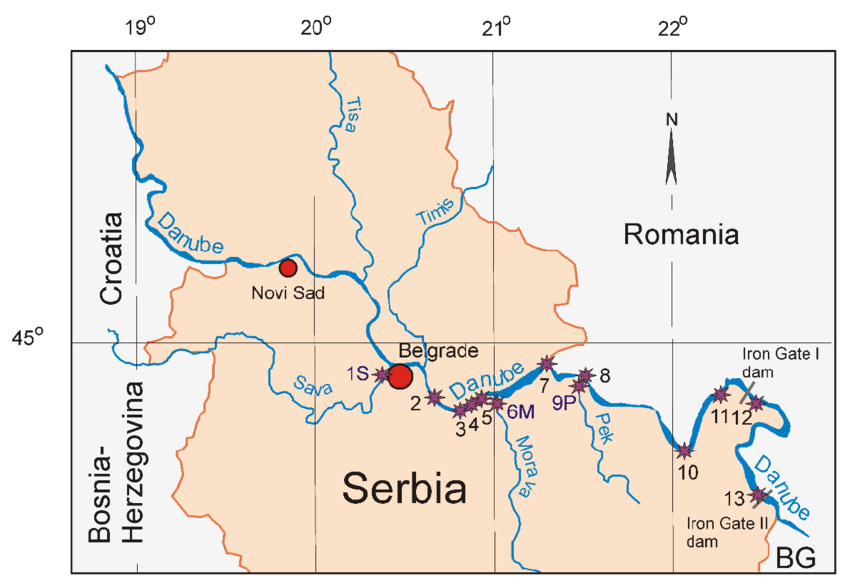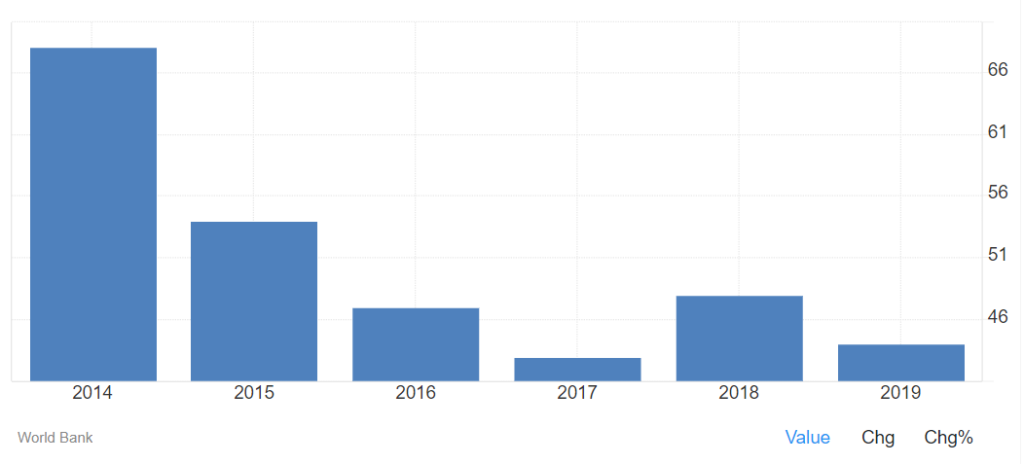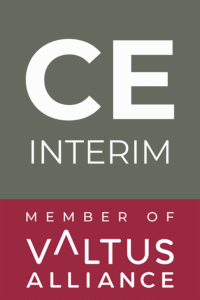Nimate dovolj časa, da bi prebrali celoten članek? Poslušajte povzetek v 2 minutah.
Srbija, ki ima strateško lego v jugovzhodni Evropi, postaja vse bolj zanimiva za mednarodne vlagatelje. Naložbe v Srbiji omogočajo dostop do močne gospodarske rasti, usposobljene delovne sile in ugodnih trgovinskih sporazumov, kar podjetjem, ki želijo razširiti svoje dejavnosti v regiji, ponuja pomembne priložnosti.
Ta članek obravnava gospodarsko okolje Srbije, ključne gospodarske panoge in strateško vlogo storitev začasnega vodenja, zlasti tistih, ki jih zagotavljajo CE Interim, ki podjetjem pomaga pri usmerjanju in uspehu na srbskem trgu.
Gospodarske razmere in potencial za rast
Srbija je v zadnjih letih pokazala močno gospodarsko odpornost in rast, zaradi česar je privlačna destinacija za neposredne tuje naložbe.
Leta 2023 bo BDP Srbije dosegel približno 1,4 milijarde tolarjev in se povečal za 2,51 milijarde tolarjev, kar kaže na stalno okrevanje po svetovnih gospodarskih motnjah.
Gospodarstvo države je raznoliko, njen razvoj pa spodbujajo ključni sektorji, kot so proizvodnja, kmetijstvo, energetika in informacijska tehnologija (IT).
Ključni gospodarski kazalniki Srbije
| Kazalnik | Vrednost |
|---|---|
| BDP | $68 milijarda |
| BDP na prebivalca | $7320 |
| Stopnja gospodarske rasti | 2.5% |
| Stopnja inflacije | 7.3% |
| Stopnja brezposelnosti | 9% |
| Prilivi neposrednih tujih naložb (USD) | $4,5 milijarde |
| Javni dolg v BDP | 55% |
Srbija je zaradi svoje strateške lege na križišču srednje in jugovzhodne Evrope pomembno središče za trgovino in naložbe. Dostop do trgov EU in zunaj nje ter ugodni naložbeni pogoji prispevajo k vse večji privlačnosti države za tuje vlagatelje.
CE Interim usmerja podjetja v srbskem gospodarstvu in zagotavlja prilagojene strategije za doseganje čim večjega donosa in obvladovanje zapletenosti trga.
Strateška lokacija in infrastruktura
Strateška lega Srbije je ena njenih največjih prednosti. Naložbe v Srbiji omogočajo dostop do države kot vstopne točke med Srednjo Evropo, Bližnjim vzhodom in Azijo, zaradi česar je Srbija ključno logistično vozlišče.
Srbija je del Srednjeevropski sporazum o prosti trgovini (CEFTA) in ima sporazume o prosti trgovini z Rusijo, Turčijo in Evropsko unijo, kar vlagateljem omogoča dostop do trga z več kot 1,3 milijarde potrošnikov.
Država je veliko vlagala v infrastrukturo, zlasti v cestno in železniško omrežje. Srbski koridor X povezuje Srednjo Evropo z Grčijo, Turčijo in Bližnjim vzhodom ter učinkovito spodbuja trgovino in logistiko.
Srbska reka Donava, ki je del vseevropskega koridorja VII, je ključna celinska plovna pot za prevoz blaga v Evropi.
Strateške trgovinske poti Srbije

Srbija daje prednost razvoju infrastrukture z modernizacijo beograjskega letališča ter gradnjo novih avtocest in železnic, da bi privabila vlagatelje.
Družba CE Interim ponuja storitve začasnega upravljanja, ki podjetjem pomagajo optimizirati dobavno verigo in logistične dejavnosti v Srbiji ter zagotavljajo učinkovito uporabo strateške infrastrukture v državi.
Ključne panoge in naložbene priložnosti
Raznoliko gospodarstvo Srbije ponuja številne naložbene priložnosti v več ključnih panogah:
- Proizvodnja: Proizvodni sektor Srbije je temelj njenega gospodarstva, saj prispeva približno 23% k nacionalnemu BDP. Država ima močno tradicijo v proizvodnji, zlasti v avtomobilski, strojni in elektronski industriji. Vrhunska svetovna podjetja, kot so Fiat Chrysler, Bosch in Siemens, so Srbijo izbrala za proizvodnjo zaradi kvalificirane delovne sile in stroškovne prednosti.
- Kmetijstvo: Kmetijstvo je še en ključni sektor, saj je Srbija ena od vodilnih proizvajalk kmetijskih proizvodov v regiji. Zaradi rodovitne zemlje in ugodnih podnebnih razmer je država idealna za gojenje različnih poljščin, vključno s pšenico, koruzo in sadjem. Srbija ima tudi dobro razvito živilskopredelovalno industrijo, ki ponuja pomembne naložbene priložnosti.
- Informacijska tehnologija (IT): Srbski sektor IT je eden najhitreje rastočih v jugovzhodni Evropi. Država je središče razvoja programske opreme, zunanjega izvajanja in storitev IT ter se osredotoča na inovacije in kakovostno izobraževanje. Srbska podjetja IT so pridobila mednarodno priznanje, sektor pa še naprej privablja znatne tuje naložbe.
Rast v srbskem sektorju IT

- Energija: Srbija si dejavno prizadeva za diverzifikacijo svojih energetskih virov s poudarkom na obnovljivih virih energije. Država ima velik potencial za vodno, vetrno in sončno energijo. Na voljo so spodbude za privabljanje naložb na ta področja. Pričakuje se, da bo srbski energetski sektor doživel precejšnjo rast, ko se bo država usmerila k bolj trajnostni mešanici energetskih virov.
Podjetjem, ki raziskujejo te sektorje, storitve začasnega upravljanja družbe CE Interim zagotavljajo dragoceno podporo pri vstopu na trg, vzpostavitvi poslovanja in strateškem razvoju ter zagotavljajo, da lahko podjetja učinkovito izkoristijo gospodarske priložnosti Srbije.
Usposobljenost in izobraževanje delovne sile
Srbija se ponaša z visoko izobraženo in usposobljeno delovno silo, zlasti na področju strojništva, informacijske tehnologije in proizvodnje. Izobraževalni sistem daje prednost tehničnemu usposabljanju, ki pripravlja strokovnjake, pripravljene za sodobno industrijo.
Srbska delovna sila je znana tudi po svojih jezikovnih sposobnostih, saj dobro obvlada angleščino, nemščino in druge glavne evropske jezike, kar olajšuje komunikacijo in povezovanje z mednarodnimi podjetji.
Izobraževanje in spretnosti delovne sile v Srbiji
| Kazalnik | Vrednost |
|---|---|
| Stopnja visokošolskega izobraževanja | 33% |
| Diplomanti STEM | 19% vseh diplomantov |
| Znanje angleščine | Visoka |
| Osredotočenost na poklicno usposabljanje | Močan |
CE Interim lahko podjetjem pomaga pri izkoriščanju srbskega trga kvalificirane delovne sile s strokovnim svetovanjem pri zaposlovanju, usposabljanju in upravljanju delovne sile ter tako zagotovi, da lahko podjetja v celoti izkoristijo človeški kapital države.
Pravno in regulativno okolje
Srbija je z reformami, katerih cilj je zmanjšati birokracijo, okrepiti pravno zaščito vlagateljev in poenostaviti regulativne postopke, dosegla velik napredek pri izboljšanju poslovnega okolja.
Naložbe v Srbiji odražajo napredek države, saj se ta uvršča na 44. mesto v indeksu Svetovne banke za lažje poslovanje, kar kaže na izboljšave na področjih, kot so ustanovitev podjetja, pridobitev gradbenih dovoljenj in zaščita manjšinskih vlagateljev.
Stopnja davka od dohodkov pravnih oseb v Srbiji je 15%, kar je ena najnižjih stopenj v Evropi, zato je Srbija privlačna destinacija za podjetja. Poleg tega vlada tujim vlagateljem ponuja različne spodbude, vključno z davčnimi počitnicami, subvencijami ter podporo za ustvarjanje delovnih mest in kapitalske naložbe.
Uvrstitev Srbije na lestvici lažjega poslovanja

Storitve začasnega upravljanja družbe CE Interim so bistvenega pomena za podjetja, ki se želijo orientirati v pravnem in regulativnem okolju Srbije. Njihovo strokovno znanje in izkušnje zagotavljajo skladnost z lokalnimi zakoni in predpisi, zmanjšujejo tveganja in omogočajo nemoteno poslovanje.
Vloga družbe CE Interim pri spodbujanju uspešnosti naložb
Naložbe v Srbiji prinašajo pomembne priložnosti, vendar zahtevajo tudi obvladovanje zapletenega in razvijajočega se trga. Storitve začasnega upravljanja družbe CE Interim zagotavljajo strokovno znanje, potrebno za uspeh v Srbiji, od vstopa na trg do tekočega poslovanja.
Podjetje CE Interim na podlagi srbskega poslovnega znanja zagotavlja strateške vpoglede in praktično upravljanje za uspeh na tem dinamičnem trgu.
Zaključek: Odpiranje naložbenih priložnosti v Srbiji
Zaradi strateške lege, močne gospodarske rasti in kvalificirane delovne sile je Srbija privlačna destinacija za naložbe v Srbiji. Vendar pa morajo podjetja za popolno uresničitev teh priložnosti srbski trg obiskati s skrbnim načrtovanjem in strokovnim vodenjem.
Storitve začasnega upravljanja, kot jih zagotavlja CE Interim, so ključnega pomena za zagotavljanje uspešnih naložb v Srbiji.
S strokovnim znanjem družbe CE Interim se podjetja izpopolnjujejo, rastejo in uveljavljajo na obetavnem trgu jugovzhodne Evrope.






اقامة مستثمر في صربيا 🇷🇸 التكلفة ومدة الانجاز ؟